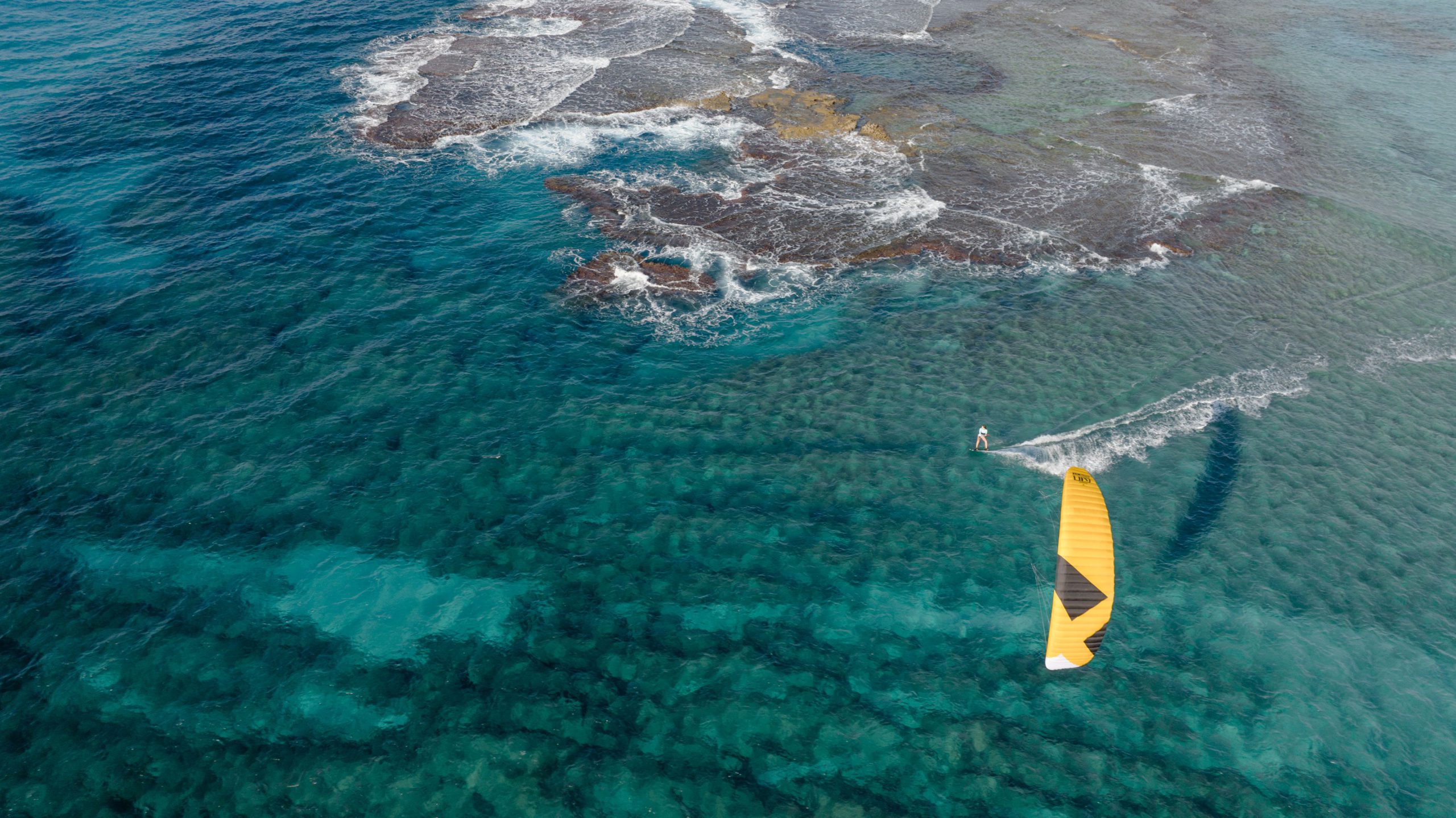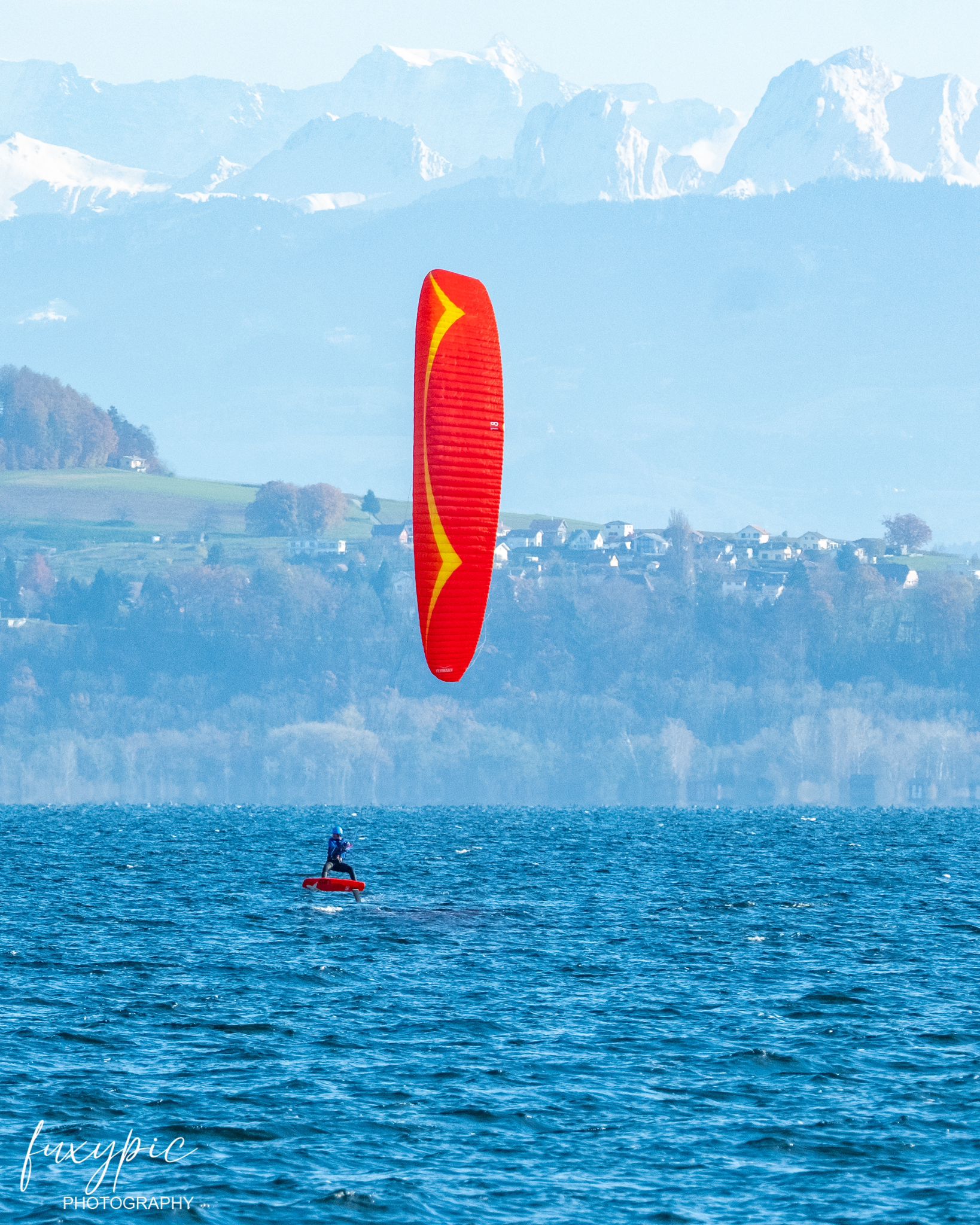MAGIC ENDLESS SESSIONSRIDING IN LIGHT WINDS
The possibilities of light wind are endless.
Hydrofoils fly through the water beneath the surface with little drag or resistance, which makes them so adept at light wind. They don’t have drag to slow them down, so they don’t require a lot of power to propel them.
A Foil Kite has much less drag and more lift per square meter than a conventional kite. The low-drag, high-lift wing improves both upwind and downwind riding angles without sacrificing stability. With foil kites, you quickly forget what it’s like to fly tube kites upwind.
FOIL KITESIN A BREEZE
Foil kites, also known as Ram Air Kites, are much more powerful and efficient than tube kites, particularly in very light winds. With 3-4 knots of wind, you can easily fly the Marabou 2 or Boom V2. These kites have enough power and speed to help you get started on the water and even lift your foil when there is no wind.
For extreme light winds (3-5 knots), specialized equipment is needed. Racers and those who want to start in almost no wind may prefer the Boom V2 18 square meters or 21 square meters. Riders who like the Marabou 12 sqm and Instinct HB 18 sqm will have no difficulty getting some rides on the water.
BY TORSTEN GREBERWIND REQUIRED
The amount of wind needed to fly a foil kite depends on the individual’s control. Foil kites with closed cells can be flown in very light winds, ranging from 3 to 5 knots, by moving back and forth on both sides of the kite’s wind window. The inertia of the kite creates its own wind.
Kitefoiling in water with light winds is still highly technical and should only be attempted by experts using a larger kite. It takes experience to fully appreciate the power of extreme light wind. Even in six knots of wind, a simple power dive can produce insane power and launch you into the foil. The more wind there is, the easier it becomes to have fun, even for non-experts.
However, even a slight drop in wind can cause the kite to fall into the water, and the session could end with swimming.
BY TIANA LAPORTEHOW TO DO IT
It is impossible to ride without wind as the kite’s structure needs to be inflated by the wind to become aerodynamic. However, skilled riders with good technique and a high-quality foil kite can ride in winds as low as 3 knots. The kite’s aerodynamics, rider knowledge, and equipment selection are all crucial in this regard.
As you start to break free from the water, by stalling or looping, the foil reduces drag, resulting in an upwind acceleration. The rider can dump the excess power by sheeting out, resulting in a smooth ride.
Kitefoiling in very light wind conditions is akin to dancing on glassy water, giving riders a sense of freedom and excitement that can only be achieved with wind speeds of 3-4 knots. Personally, I enjoy riding my Boom V2 in almost no wind and being the first one in the water when it’s glassy. It requires technique, and the ability to spot small gusts in the water while knowing how and where to maneuver.
BY SERGE ALBRICIWHICH KITE
To fly a kite in light wind, it’s important to use a light kite. A light kite will stay in the air longer than a heavy kite with the same surface area, especially when the wind tends to drop. The different types of kites can be classified from lightest to heaviest as single-skin kites (e.g. Shaman), hybrid kites (e.g. Marabou), and closed-cell kites (e.g. Spirit, Instinct HB, Boom). However, the kite’s shape and technical characteristics also play a significant role. A more powerful kite requires less wind for the rider to have fun.
For snow, the Shaman and Marabou kites are recommended as they are light and powerful. On the water, the Marabou 2 is excellent for staying in the air for a long time in super light winds, and it has a smooth and predictable behavior. The Spirit and Instinct HB, while slightly heavier than the Marabou 2, offer amazing power and a wide range of use, making them ideal for having fun in light winds. They can also easily relaunch when an inflatable kite is stuck in the water due to a lack of wind.

Keep yourself postedLatest news
 Xavier de Le Rue’s No-Way Adventure: Conquering Uncharted Terrain
Xavier de Le Rue’s No-Way Adventure: Conquering Uncharted Terrain
Xavier de Le Rue’s No-Way Adventure: Conquering Uncharted Terrain
 FROM SAILING ENTHUSIAST TO AMERICA’S CUP: THE INSPIRING JOURNEY OF NILS FREI
FROM SAILING ENTHUSIAST TO AMERICA’S CUP: THE INSPIRING JOURNEY OF NILS FREI
FROM SAILING ENTHUSIAST TO AMERICA’S CUP: THE INSPIRING JOURNEY OF NILS FREI
 EXPLORING WINDY WONDERS: UNFORGATABLE SAILING ADVENTURE
EXPLORING WINDY WONDERS: UNFORGATABLE SAILING ADVENTURE



